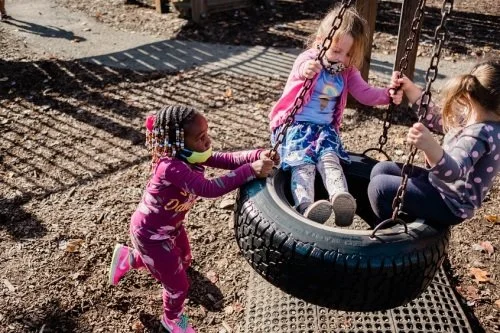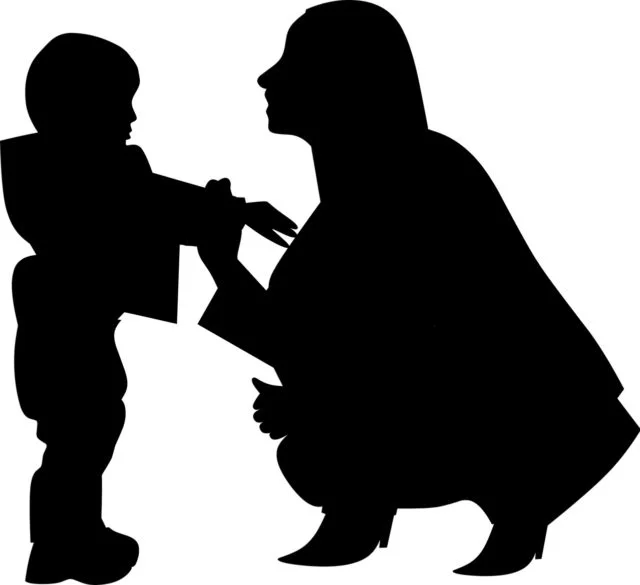Op-eds, Letters to the Editor
Alison McCook
The Philadelphia Inquirer
This week, we will reach the edge of the so-called childcare cliff, when the pandemic-driven infusion of federal funds to save the childcare industry runs out. An estimated one in three childcare programs in the country — or 70,000 — may have to close their doors.
In Pennsylvania alone, nearly 3,000 programs are set to shut down, leaving 150,000 kids with nowhere to go. For many families, this may not be a big deal — they make a few calls, find another nearby place that has space for a new child, and after an adjustment period, everyone settles in to a new routine.
The Editorial Board
The Philadelphia Inquirer
Without federal action, three million children in America could abruptly lose access to childcare at the end of the month, a development that could push many parents — including, experts say, a disproportionate number of women — out of the workforce.
Roughly $37 billion in pandemic-era stabilization grants — which have ensured financial access to childcare for families — will lapse on Sept. 30, leaving families with no guarantee of continued care.
Eva Wood - Ligonier; Erin Schellenberger - Latrobe
Trib Review
The child care staffing crisis, caused by the sector’s low wages, is rapidly diminishing working families’ access to child care. Unfortunately, programs all across Pennsylvania are closing classrooms and further limiting families’ options as they look for a safe, high-quality learning environment for their child while they work.
Across Pennsylvania there are thousands of families sitting on waiting lists. This impacts the workforce in every other Pennsylvania industry. Child care teachers are the workforce behind the workforce, and we are failing them.
By Dan DeBone
The Philadelphia Citizen
Any family will tell you that balancing work and parenting is challenging in the best of times. With the parents of most young children in Pennsylvania working, child care is critical to supporting the Commonwealth’s labor force and employers.
When parents don’t get the help they need, it diminishes their work commitments, performance, and opportunities — costing Pennsylvania’s economy. This effect is the focus of a new study from the nonprofit ReadyNation and the Pennsylvania Early Learning Investment Commission. According to the study, gaps in Pennsylvania’s child care system are costing families, employers, and taxpayers about $6.65 billion annually in lost earnings, productivity, and tax revenue.
The Sharon Herald
ALONG with being first lady, Jill Biden is also a teacher, and she once observed, “Teaching is not a job. It’s a lifestyle. It permeates your whole life.”
And it seems to be a lifestyle fewer and fewer young people are willing to adopt.
The United States is in the midst of a teacher shortage, and in Pennsylvania the situation has been described as “dire and worsening.”
There has been a 67% drop in the number of new educators who have become certified over the last decade, and in the 2020-21 school year the number of emergency permits issued to individuals to take teaching jobs exceeded the number of new teaching certifications from in-state programs.
By Brenda Castellano
Reading Eagle
It’s tough for smaller child care businesses such as mine to pay staff what larger organizations are paying. Trying to compete with these organizations hurts the centers and owners, and we make sacrifices. This is why we are advocating for our legislators to invest in our industry like they do in the agricultural and energy sectors.
By Kate Rothstein
The Pittsburgh Post-Gazette
This November we have a choice. We must elect state and federal candidates who prioritize stabilizing child care and the needs of working families and value the work of early childhood educators. By voting for candidates who will invest in child care, we make an important choice for our young children, working families, and the future of our economy.
By Marci Lesko
The Morning Call
Working parents rely on affordable and accessible child care to stay in the workforce. Unfortunately, there is a national crisis because child care programs are unable to recruit or retain quality teachers. That staff shortage is forcing classrooms and facilities to close, limiting critical child care access.
By Erin Schellenberger and Eva Wood
Triblive.com
The Ligonier Valley Learning Center has never had the staffing challenges it has today in the 38 years it has been in operation. While there are other businesses also struggling to recruit and retain staff, our industry supports the workforce of every other industry. If parents don’t have access to child care, they cannot work. If they aren’t available to work, businesses can’t hire them.
By Mai Miksic
Daily Local News
This Mother’s Day, while I am appreciating the gifts my children and husband get me, I am also longing for a society that supports motherhood and honors mothers’ valuable contributions. Here’s my shortlist of things I want for Mother’s Day, not just for myself, but for all moms.
Lancaster Online Editorial Board
We entrust child care workers to care for our precious children, but we do not pay them a decent wage; workers in manufacturing can earn significantly more. Even child care workers who have education degrees are seriously underpaid. And the benefits often range from meager to nonexistent.
So it’s no wonder, really, that child care facilities are struggling to fill job vacancies.
By Elliot Weinbaum and Rashanda Perryman
The Philadelphia Inquirer
This crisis has exacerbated issues that our city has been working to address for years, but there is more to be done. We all must act now — advocate for early childhood education, thank a teacher, contribute resources, time, and expertise to build the early learning sector — and continue to act when this plague has passed.
By Ibis Fernando
Lehigh Valley Live
If I have to close my doors permanently, how will the families that relied on me to care for their children be able to return to work? I urge my legislators to include childcare in the stimulus package. The health of our economy depends on these funds.
By Emily Hartman
Reading Eagle
…Once we are past this health crisis and businesses reopen, child care will be needed more than ever in order to help restore our workforce and economy.
By Stephanie Dolivera
Penn Live
Finding and affording quality child care was a problem prior to this current crisis - often serving as a barrier to employment for many potential workers. The U.S. Chamber of Commerce Foundation recently estimated the economic cost of insufficient child care in Pennsylvania to be $3.5 billion annually.
By Gail Reaser
Lehigh Valley Live
My business partner and I have owned and operated The Children’s Garden for 16 years. Since this time we’ve achieved and maintained a Star 3 rating, which designates high-quality child care in Pennsylvania. Since the COVID-19 outbreak, like so many of my colleagues in early learning who are also small business owners, we’ve had to close our child care center.
By Kate Giammarise
Pittsburgh Post Gazette
The system is “truly at a breaking point,” said Cara Ciminillo, executive director of Pittsburgh-based advocacy organization Trying Together, speaking Tuesday on a conference call with reporters.
Providers are being hammered by a combination of an already fragile infrastructure and staffers who often earn low wages…
By Kendra Aucker
The Daily Item
Health care is bursting with opportunities…
What’s standing in our way? In addition to the supply of skilled workers in specialty clinical roles, a lack of accessible, affordable, high-quality child care for infants and toddlers, and it’s not a problem for health care alone.
By John King & Myra Jones Taylor
The Hechinger Report
We must improve the odds for babies and toddlers, especially those who aren't white.
More than 10,000 babies will be born in the United States today, each with infinite potential.
By Julia Klein, Chairwoman & CEO of CH Briggs Co.
Reading Eagle
Investing in our young children is not hard. It's not soft. It's not complicated. It's not partisan. It's not up to someone else. It's an imperative backed by decades of research.



















